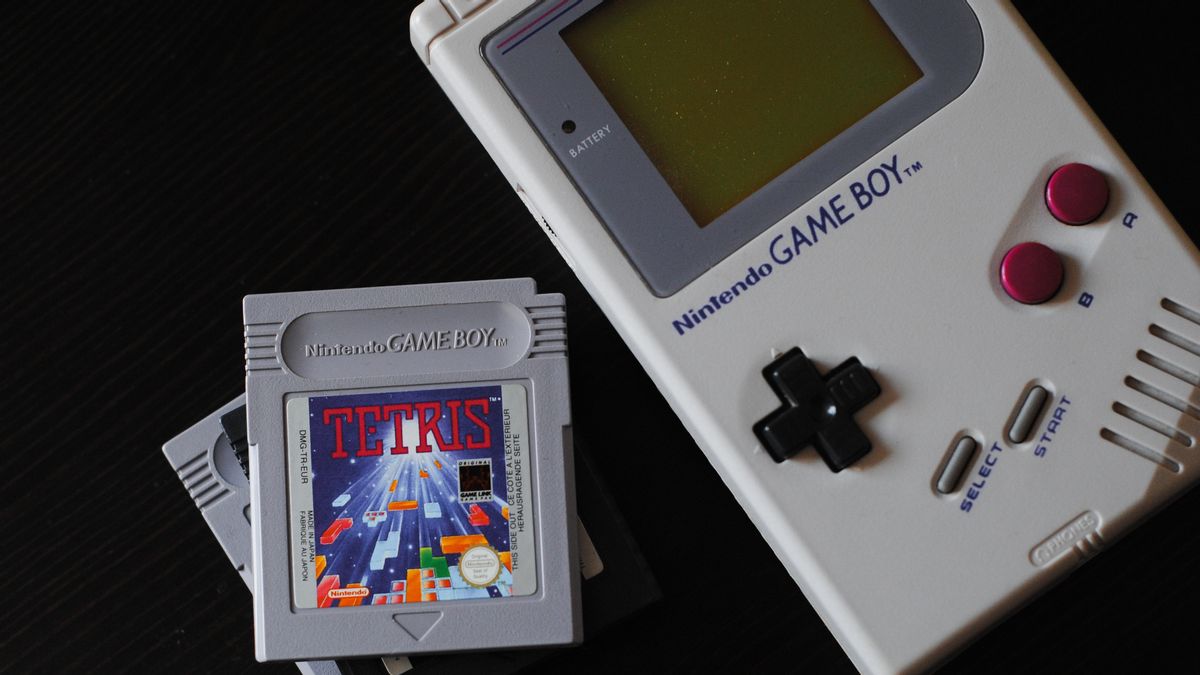JAKARTA - Every June 6 is celebrated as World Tetris Day. The game first appeared in 1984, and today is exactly 36 years old Tetris was created by a Russian computer programmer named Alexey Pajinov.
Then how is the history? And why this game can make fans feel at home for a long time playing this simple game?
Alexey Pajitnov shared his story about how he made the game with The Guardian. The game was created while working at the Dorodnicyn Computer Center at the USSR Academy of Sciences in Moscow. The name Tetris is taken from the Greek numeric prefix, tetra which means a four-part building.
"I've loved puzzle games since I was a kid, especially pentomino games. You can get these geometric games in a Moscow game store. In June 1984, it occurred to me that they might be a good basis for computer games," said Pajitnov.
Because the 12 pentomino slice was too complex, he simplified it to a tetromino (four pieces, red). At first the program was designed for the Russian computer, Elektronika 60. The computer did not yet have a drawing, which meant Pajitnov had to use letters to make parts of the blocks from which Tetris was born.
Then he collects ways to manipulate the pieces of the block so that they can be rotated and controlled on the screen. It took Pajitnov about three weeks to make the game controllable on screen.
"I pretend I am fixing my program, when in fact I can't stop playing it. When other people try it, they can't stop either. It's interesting for everyone," he told his story.
Even though he easily made this game, he was confused about how to publish this game. As a result, western companies have started to pirate them. Some have even made a PC version and have been smuggled into Hungary.
Soon after, Pajitnov began engaging the government of the Soviet Union to publish it. It was one of the first game software that the Soviets exported.
In short, the Henk Rogers company was granted the rights to develop the game by the bureau of the Soviet Union in charge of exporting Soviet software. Their job was to market the game primarily to the Japanese game market until Nintendo made a Game Boy version of it.
Their debut was when they compared the game Tetris at the Consumer Electronics Show, an electronics exhibition in Las Vegas in 1988. That was the turning point in how the game went global.
Make you addictedSo what makes this game addictive?
In 2014 a Professor of Psychology from the University of Sheffield, Tom Stafford revealed why the game is so addictive. Through his research, he even revealed that people who are addicted to playing Tetris can imagine Tetris blocks when their eyes are closed. Or when looking at a pattern on the floor, one would imagine a tetromino.
In the study Stafford also mentioned the Zeigarnik effect. To illustrate, Blume Zeigarnik - who first wrote about the effect in the 1920s in Berlin - observes a waiter in a cafe who has perfect memories for all the orders they have not completed. However, the person cannot remember what was sent to the customer table.
So you could say this effect can make people focus on things that are not finished. And forget about things that were done.
"This is the Zeigarnik effect, a memory for unfinished tasks," Stafford said. "It's a world of tasks that don't last forever. The game endlessly generates assignments, lines, for you to complete, and endlessly exercises your visual insight."
This makes perfect sense to humans. When we need the memory to do the task at hand, the brain has the ability to do it. But once the task was done, the memories stopped bothering about it.
"Tetris' genius is to harness memory links to unfinished tasks and engage us in a compulsive cycle of completing and generating new tasks," said Stafford.
The English, Chinese, Japanese, Arabic, and French versions are automatically generated by the AI. So there may still be inaccuracies in translating, please always see Indonesian as our main language. (system supported by DigitalSiber.id)













